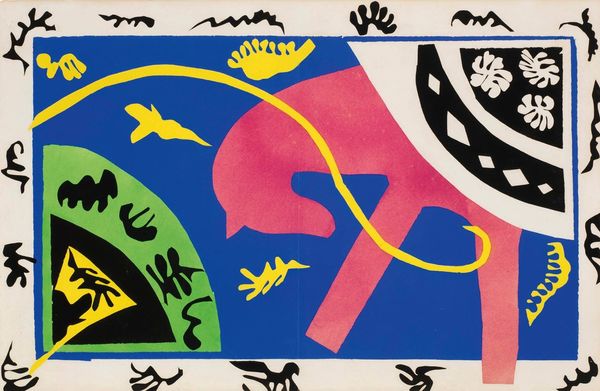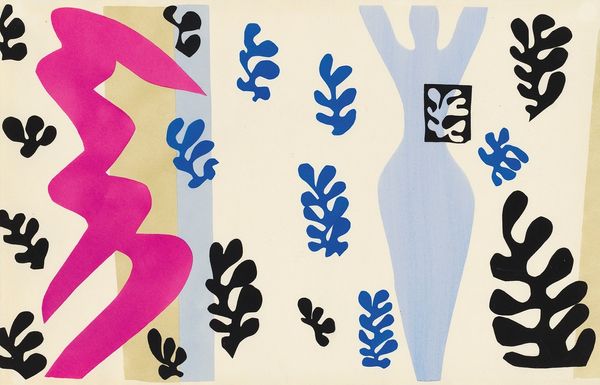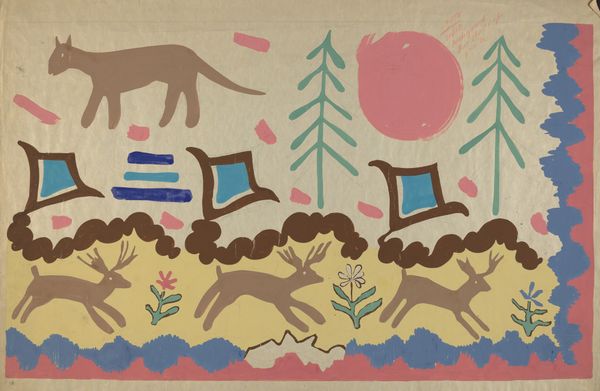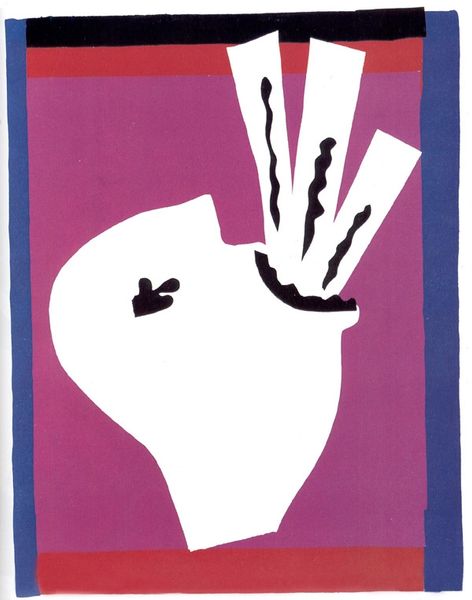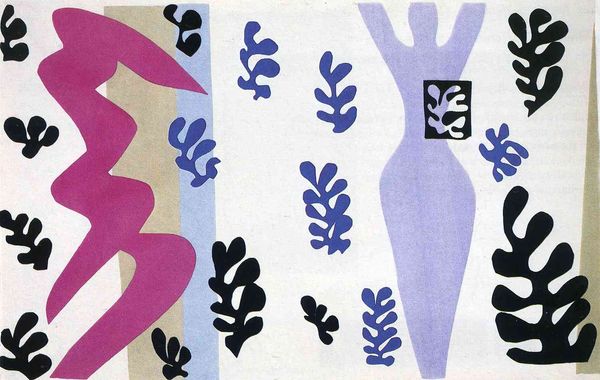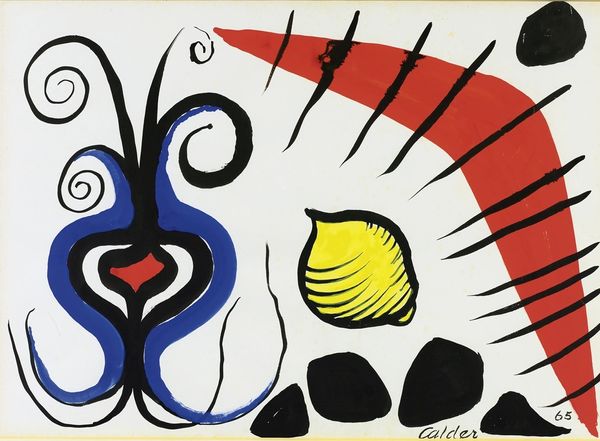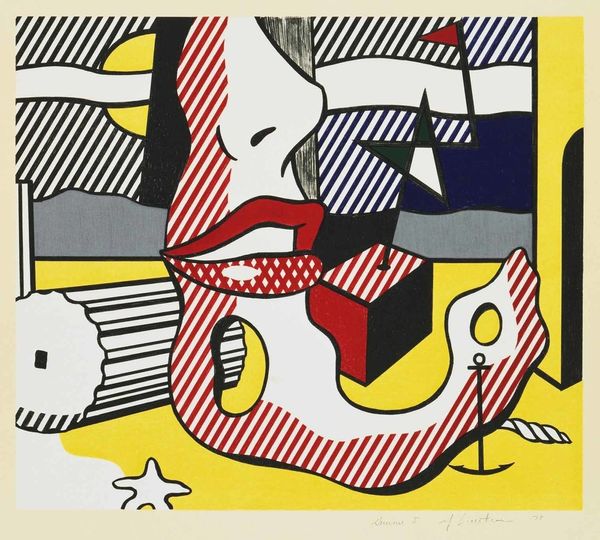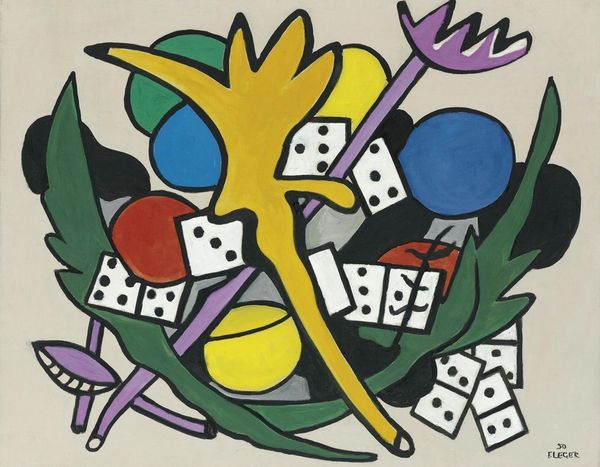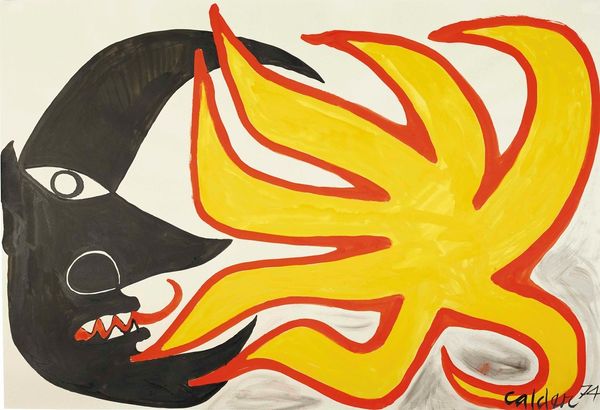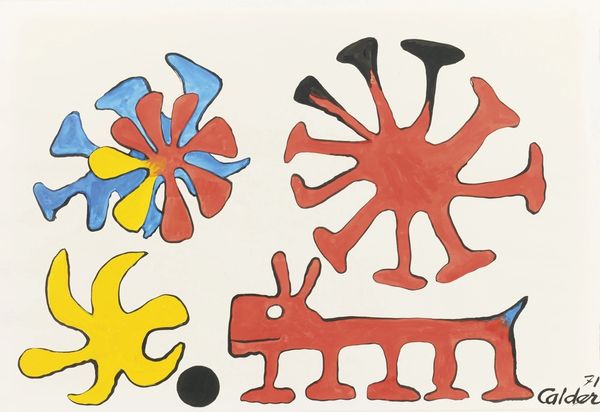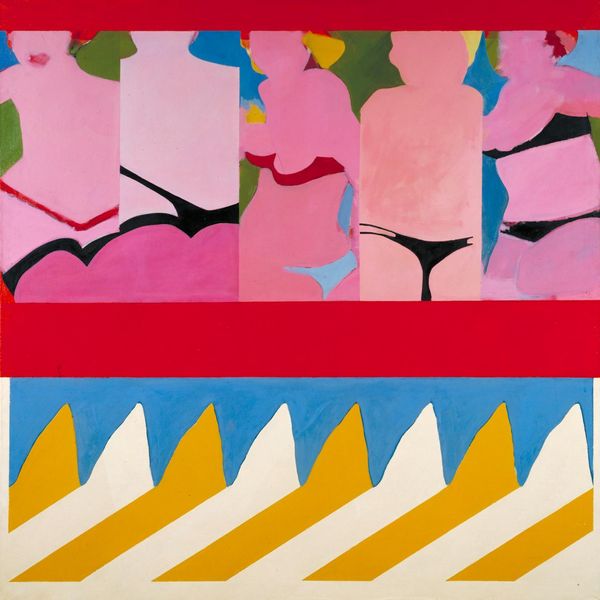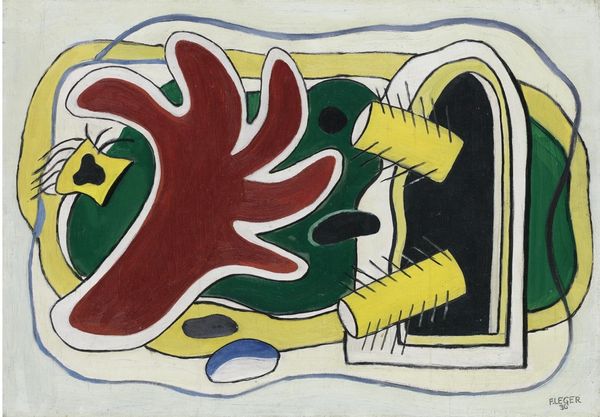
Copyright: Modern Artists: Artvee
Editor: Here we have Henri Matisse's "L'enterrement de Pierrot," created in 1947, using mixed media and collage. I find the abstract geometric shapes really intriguing, but I'm not sure what to make of it as a whole. What do you see in this piece? Curator: The title is a fascinating point of entry. The funeral of Pierrot… Think of Pierrot as a recurring archetype – the sad clown, eternally lovelorn. This image is after all an archetypal representation of grief. Do you see the visual echoes of mourning rituals, the stylized procession, even the symbolic shedding of tears at the bottom? Editor: I see it now, a stylized carriage on top of teardrop shapes. It's somber but also…celebratory, somehow. Is that the fauvist influence shining through? Curator: Exactly. It's Fauvism, but it's also Matisse in his later years, using cut-outs. What do you make of his decision to use these simplified shapes rather than detailed figures? Editor: It almost makes the grief more universal, less specific. The abstraction helps me project my own feelings onto it. I feel it has some resemblance to children's art too! Curator: Precisely. The bold colours and flattened space enhance that universality. Look how he reduces figures to their essential forms, the barest suggestion of movement, of emotion. The cultural memory of ritual is present. It prompts introspection. Editor: I had never thought of it in terms of archetypes. The imagery made it harder for me to extract any clear meaning. Thanks for shedding light on the history of symbolism, I found that interesting and can carry this with me to understand future artworks. Curator: And I am struck by the artist's unique interpretation of familiar icons. Art continuously reframes universal feelings.
Comments
No comments
Be the first to comment and join the conversation on the ultimate creative platform.
